Corrosion protection:
Lastly I evaluated corrosion protection and inhibiting. Itís a common claim made by the products in this evaluation so I want to evaluate that as well. Some of the products state that they meet or exceed this test and spec or that test and certification (the most common being ASTM B117 and ISO 9227 salt fog chamber corrosion test and a variety of mil specs. ) All of those tests are very good and harsh controlled environment tests but where I found them lacking was:
1. No UV component. All the tools and gear I use spend a lot of time outside and UV rays break down even the best of products . Those UV effects are not mimicked in a sealed fog chamber in a lab.
2. Constant temps. Our gear is expected to perform in subzero to super-hot temps and sometimes those fluctuations may happen all in the same day or week. A fixed 95 degree F test is certainly equitable to all the samples but not a true environmental test with real world applications for a guy that hunts in freezing temps and then brings his gun into the cabin where it sets near the wood stove to dry out and then is returned to sub-freezing temps the next day.
3. Proximity and cross contamination. Since itís just not cost effective to test each metal plate all by itself in a fog chamber, many samples are ganged together in a small test chamber. Being that the test chamber is only so big, they are positioned very near one another and samples are misted with the same recycled salt water carrying the corrosion from products failing the test (and the products being tested) onto samples adjacent to other parts. I hope to avoid that.
4. No real life dirt or debris. The wind carries all manner of debris on it that rests on metal parts (some more than others) An outdoor evaluation more closely simulates real ďin the fieldĒ situations.
For these reasons (and because I plan to sample far more products than has perhaps been done at the same time during any other evaluation conducted) and because I want to increase my confidence level in the results I get, I conducted 3 evaluations. Many of the home spun evaluations I have seen online ran only a single sample set implying the results would be the same if repeated. I ran 3 separate evaluations under a variety of conditions. A portion of this evaluation took place outdoors in direct sunlight with the fluctuations of night and daytime temps as well as UV exposure and wind, airborne debris and rain. Rain or not I planned to mist one group of the sample plates with a salt / water solution in the ratio of 1 tsp non-iodized salt per cup of tap water (and I have hard water with mineral deposits). This will be the most harsh environment meant to expedite the formation of corrosion.
All the sample plates were given a 320 grit (two direction) brushed finish to remove any rust inhibitors the steel maker placed on the steel so they donít rust in the store. Then the plates were chemically cleaned with acetone prior to applying the product. Each product in the evaluation was applied to the metal per the product instructions on the label. Nearly all products labels direct the user to apply liberally and then wipe off excess product. I followed those instructions as I donít care for a sloppy, wet gun where excess product is dripping or rubbing off, onto my clothing, gear or car. I left an amount of product on the metal just as I would when I store my firearms. The plates were attached to a suitable (non-metallic) holder at a roughly 15 degree angle from vertical. I didnít want them lying flat so water would pool on them and I didnít want them standing perfectly upright either as they would shed water and debris too easily.
All the metal samples were sheared out of the same sheets of cold rolled steel sourced at my local hardware store. Several of these sheets were purchased for this evaluation.

Here is sample board #1 after all the products had been applied to the sample plates. This sample board then sat in my shop for 5 hours to allow the products to fully dry or cure or evaporate or set a film before the board was exposed to the elements.

Here is a short video of all the samples on board #1.
https://www.youtube.com/watch?v=8sj8HZApO6Y
Then the samples were misted with the salted water. Here is a closer view of the plates after the misting. Notice the different reactions with water. Most plates beaded the water.
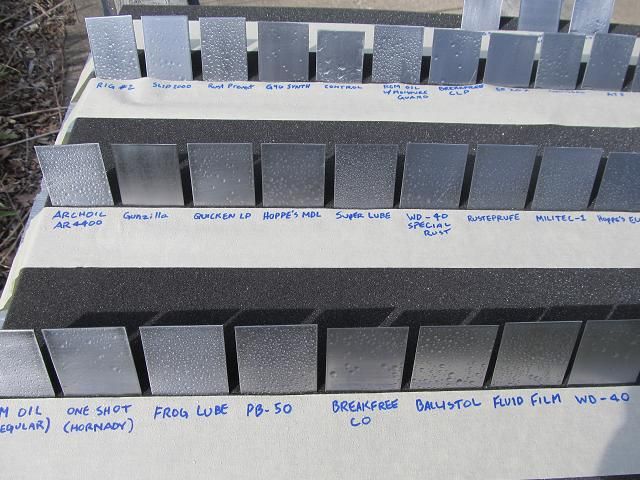
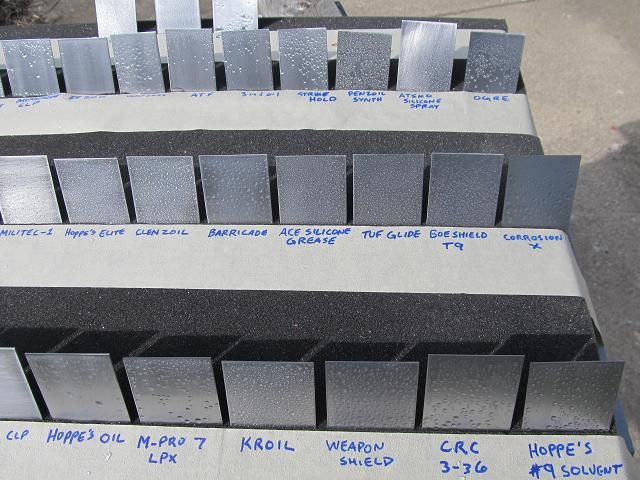
Not all products beaded water. I donít know the significance of this but observed and recorded it anyway. The products that did not bead water can be seen below.
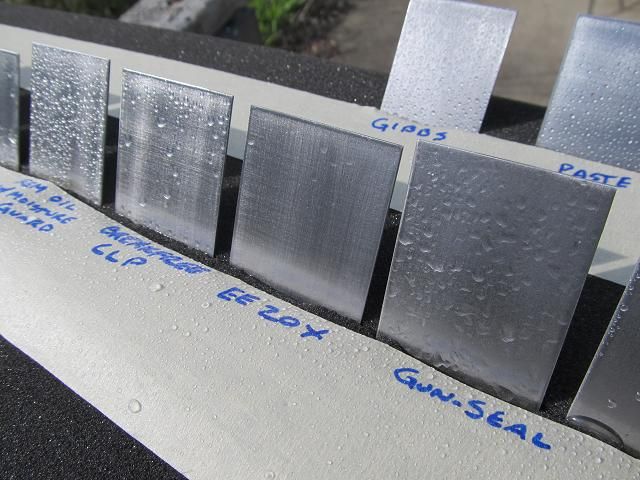
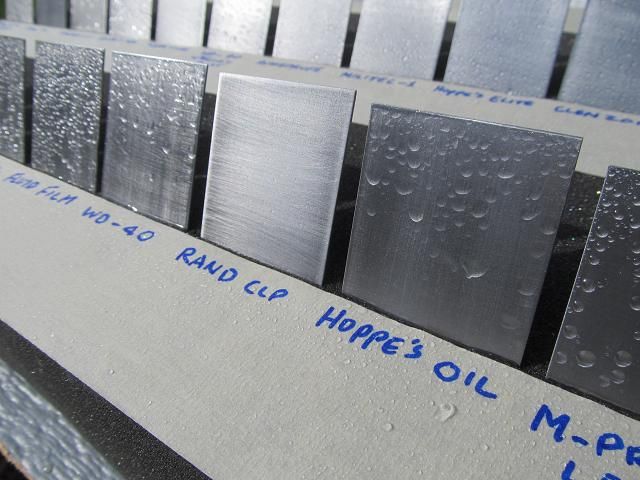
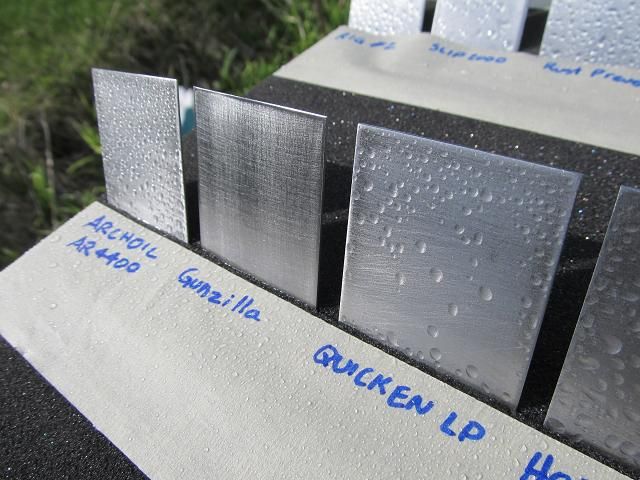
After 2 hours I observed the samples. The controls were already exhibiting signs of corrosion. White spots are the result of the salt left behind after the water evaporated and does not indicate rust, just dried salt.
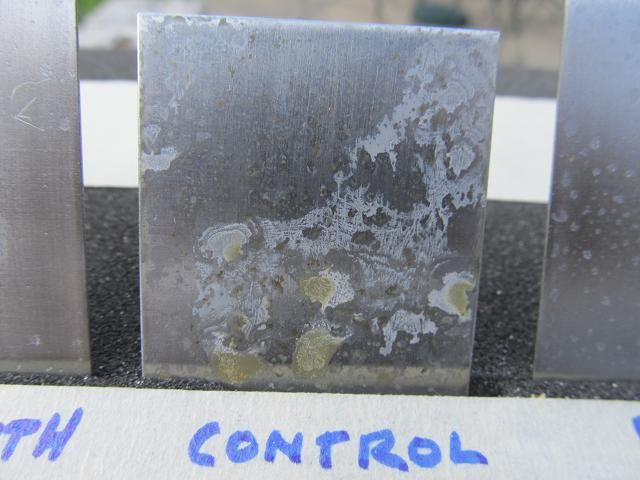
The plates spent the night outside and it was quite a night. Temps in the upper 30's, a storm rolled through with wind gusts to 30 MPH and on and off rain. 24 hours after each product was applied to the plates they were observed for signs of corrosion.